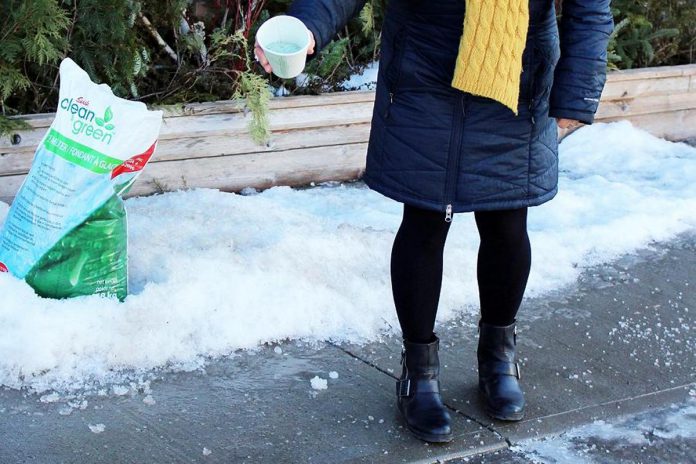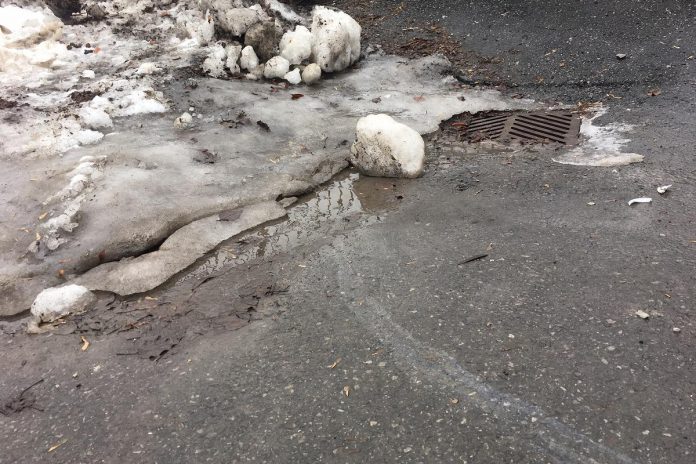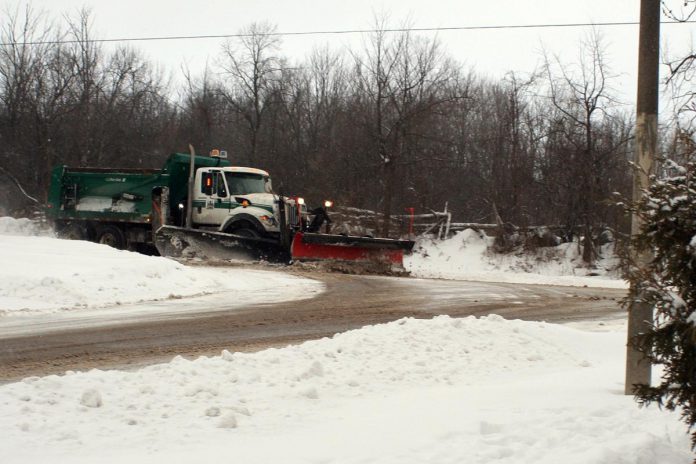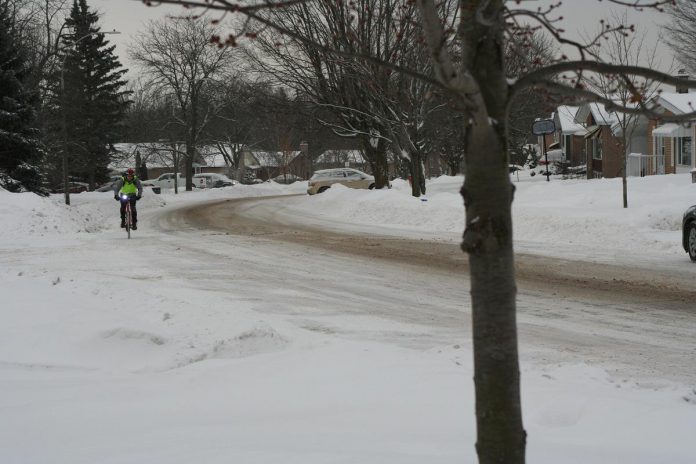
This winter has been great for snow. The snow makes the landscape look lovely this time of year, and many winter enthusiasts are happy to hit the ski slopes and trails. That said, getting around can be stressful in snowy and icy conditions.
Unfortunately, fluctuating temperatures along with an increase in freeze and thaw cycles because of climate change, leave us with sheets of ice hiding between layers of snow. The slush that comes along with intermittent rain freezes into thick, icy mounds making walkways challenging to navigate and roads, sidewalks, and driveways deceptively slippery.
Salt is commonly used for reducing the amount of ice around homes, on sidewalks, and on many commercial properties. Salt is relatively inexpensive, and it melts ice quickly making it easier to clear, but there are many reasons to re-think salt use around your home or business.
Before you bring out the salt, consider its impact on your property, your pets, your drinking water, and the watershed environment.
Salt is corrosive and can cause damage to vehicles and bikes. It is easily tracked inside on the treads of boots causing damage to footwear, carpets, rugs, and flooring. If you have pets, salt can irritate paws and it can be harmful if ingested. Salt is also not effective when temperatures dip below -10°C; sand provides traction at any temperature.
Salt impacts your gardens too. It can raise the pH of your soil and make it less fertile. The health of trees, shrubs, grasses, and other plants that line salted driveways and walkways can deteriorate if the concentration of salt becomes too high. Root systems are easily damaged by salt, making uptake of water difficult. The drought-like conditions created by excess salt can cause plants to dry out.

Spreading salt on the sidewalk can have a negative effect on your property, but it is also important to recognize that its impacts extend beyond your yard. Salt can negatively impact the quality of groundwater and surface waters that we rely on for drinking water.
Salt dissolves in water, which means that it is easily carried into groundwater, and once the spring thaw and April showers hit, dissolved salt runs off into storm sewers which drain directly into local waterways affecting plants and animals in our rivers, streams, and lakes.
This is concerning when you start to think about the amount of salt used on roads, driveways and sidewalks over the winter. Approximately five million tonnes of salt are applied to roads in Canada each year and Ontario municipalities alone use more than 100,000 tonnes every year.
Undoubtedly, this has reduced accidents and injuries associated with icy winter conditions but, unfortunately, this comes with a cost to the environment.
“All that salt eventually enters local waterways and the groundwater that we rely on for our drinking water,” explains Terri Cox, risk management official for the Otonabee-Peterborough Source Protection Area. “Ontario’s Clean Water Act identifies road salt use as a drinking water threat, and our local policies contained in the Trent Source Protection Plan are in place to help to protect the quality of our drinking water sources by eliminating excessive salt use.”
The impacts of salt on groundwater and surface waters are well documented. Thankfully, there are many alternative products on the market that work much like salt without the negative environmental impacts.

On a large scale, many municipalities are opting for alternatives when de-icing roadways. In 2021, the City of Peterborough started using a salt brine (water and salt mixture) on roads to reduce their overall salt usage. Toronto, London and Huron County and the Niagara Region in Ontario along with several cities in Quebec use beet juice/salt brine as an alternative to prevent ice from forming on roads.
The brine solution is more expensive, but has less negative impact on the environment and is effective when temperatures dip to as low as -32°C, compared to salt which doesn’t melt ice below -10°C.
Around your home there are alternatives to salt that can help to improve slippery conditions. Sand provides traction at any temperature and salt/sand mixes, non-clumping kitty litter, and fireplace ashes are also great substitutes. Just be sure not to track them indoors where they can make a mess.
Whatever you are spreading at home or work, a little will go a long way. Use any de-icing product sparingly and give it time to work.
“A 10-kilogram bag of salt from the hardware or grocery store is enough to cover an NHL-sized ice rink,” Cox says. “One tablespoon of salt is enough to melt one square metre of ice. A little goes a long way.”
Also be sure to shovel first so you can use less, saving money and protecting the environment. Ensure your downspouts are directed away from paths and driveways to prevent puddles and subsequent ice spots from forming.

Enjoy the beauty of winter and — whether you’re on the road, the trail, the sidewalk, or the front stoop — slow down and take time to consider the best solutions for winter snow and ice removal that safeguard our gardens, help wildlife, and protect our water quality.
For more information about how to protect drinking water sources during winter, visit otonabeeconservation.com.


























